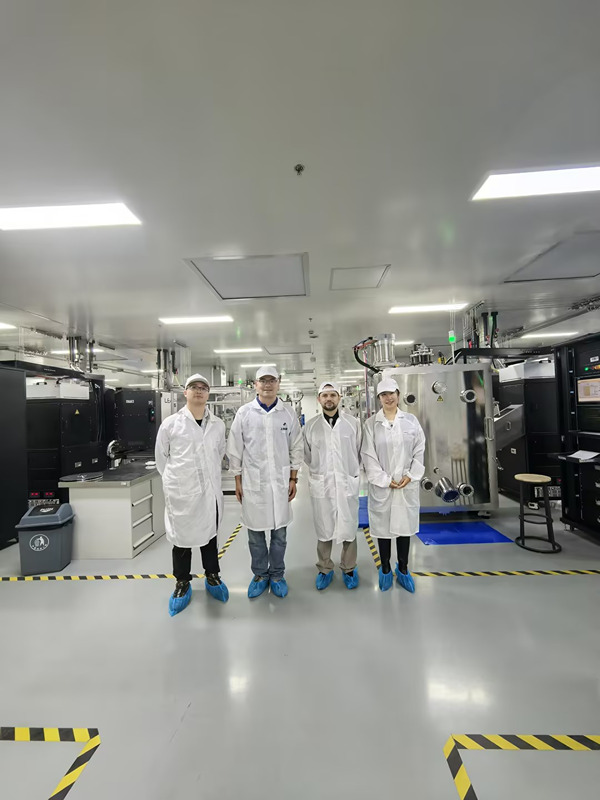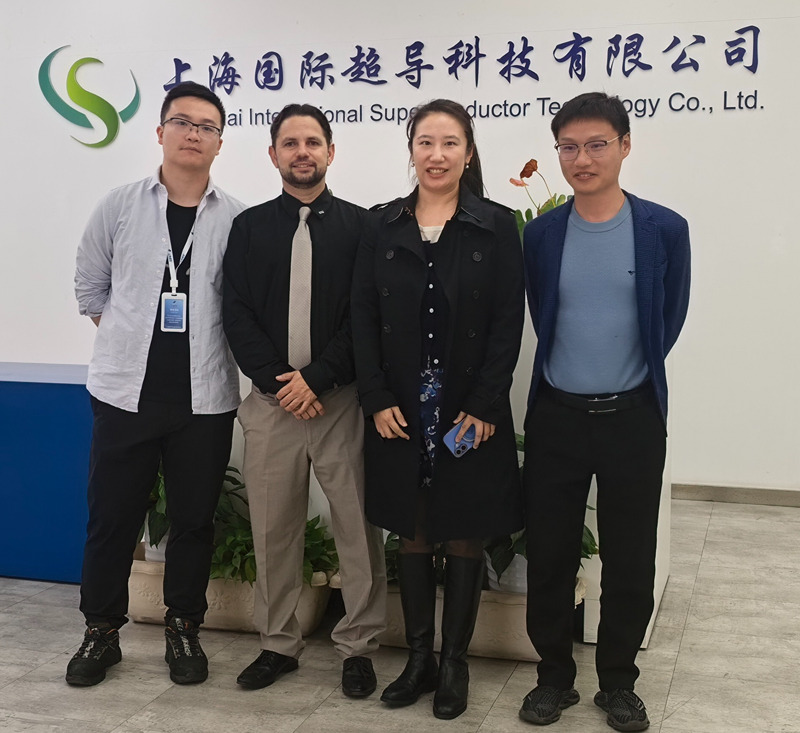ITEP Researcher Presents Keynote at APAP 2025 in Jeju, South Korea
Dr. Wescley Tiago B. de Sousa, was invited as a keynote speaker at the International Conference on Advanced Power System Automation and Protection (APAP 2025), held in Jeju, South Korea, from October 20–23, 2025.
In his keynote presentation titled “Building the Grid of Tomorrow: Superconducting Paths to Efficiency and Reliability” Dr. de Sousa discussed innovative approaches for integrating superconducting technologies into modern power grids. His talk highlighted ongoing research at KIT focusing on superconducting cables, fault current limiters, and advanced grid architectures that enhance both energy efficiency and system reliability.
The APAP Conference is one of Asia’s leading forums for researchers, engineers, and industry professionals in the field of power system protection, automation, and control. The 2025 edition in Jeju brought together experts from academia, utilities, and manufacturing to exchange knowledge on cutting-edge technologies and solutions for the energy transition.
During the event, Dr. de Sousa also had the opportunity to engage in productive discussions with international specialists and industry representatives, strengthening scientific collaboration between KIT–ITEP and global research institutions active in power system innovation and superconducting applications.
“It was an inspiring experience to share our research at such a prestigious conference and to connect with experts tackling similar challenges in power system reliability and sustainability,” said Dr. de Sousa.

Guest lectures by Dr. Batista de Sousa at Chinese universities
Dr. de Sousa, recently concluded a highly productive visit to China, delivering invited lectures at two of the country's most prestigious universities and a leading provincial-level laboratory. The series of engagements in October 2025 served to strengthen collaborative bonds and share KIT's expertise in high-temperature superconductivity for power applications.
Shaping the Future Grid at Tsinghua University
Hosted by Professor Dr. Xinzhou Dong at Tsinghua University, Dr. de Sousa presented his lecture, “Superconducting Power Cables: Building the Grid of Tomorrow.” The presentation detailed ongoing KIT research focused on the design, modeling, and operational integration of superconducting power cables, highlighting their pivotal role in creating more efficient and sustainable energy transmission infrastructures. The visit fostered a vibrant exchange of ideas with faculty and students, offering Dr. de Sousa deeper insight into the specific challenges and opportunities facing the modernization of the Chinese power grid.
Reflecting on the visit, Professor Xinzhou Dong stated, "Dr. de Sousa's visit provided a crucial perspective on the transformative role of superconductivity in future power systems. It underscored the immense potential of this technology to redefine grid efficiency, stability, and capacity. Such dialogues are essential to charting a collaborative path toward a resilient and advanced energy infrastructure.
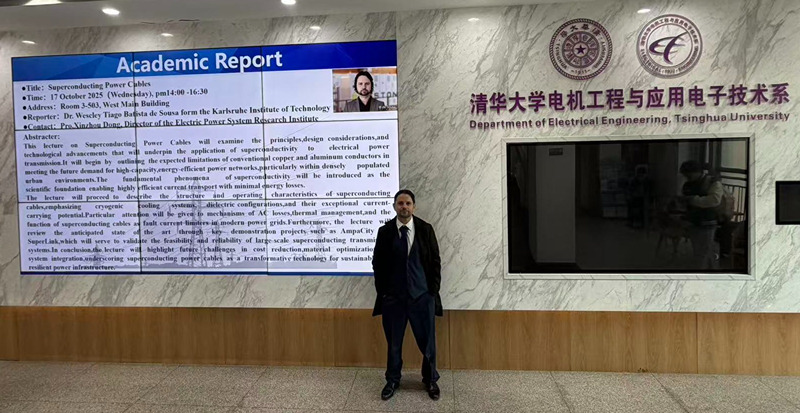
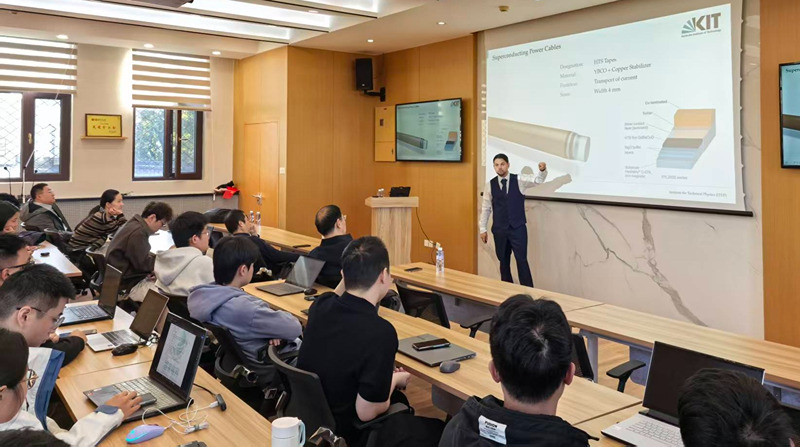
Advancing System Reliability at Beijing Jiaotong University
At Beijing Jiaotong University, where he was welcomed by Professor Dr. Qihuan Dong, Dr. de Sousa delivered a talk entitled “Superconducting Fault Current Limiters (SFCL): Enabling Reliable Future Power Systems.” He showcased recent technological advances and ongoing projects at KIT concerning HTS power cables and fault current limiter systems. Complementing the lecture, a tour of the university's laboratories provided a firsthand look at their experimental HTS projects, further solidifying the research partnership between KIT-ITEP and leading Chinese groups in applied superconductivity.
Professor Qihuan Dong commented on the long-standing collaboration, saying, "My partnership with Dr. de Sousa dates back to 2017. Over the years, I have come to deeply trust his expertise in applied superconductivity simulation and respect KIT's position as a global leader in superconducting power. This visit serves as a valuable platform to elevate our cooperation to a new level, with the shared goal of making tangible breakthroughs in HTS technology and propelling the entire field forward."

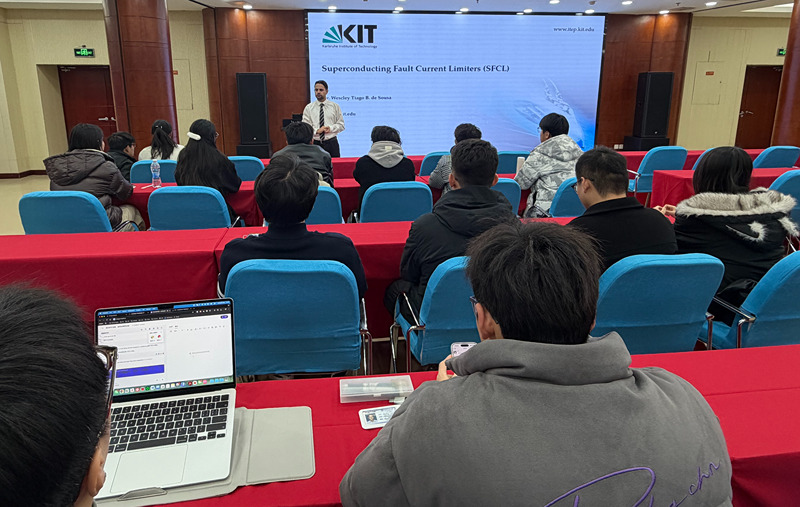
Engaging with a National Innovation Hub: Zhongyuan Electric Laboratory
The itinerary also featured a visit to the newly established Zhongyuan Electric Laboratory in Xuchang, a state-of-the-art facility dedicated to high-voltage testing, power equipment development, and next-generation grid technologies. There, Dr. de Sousa presented an invited talk on “Advanced Superconducting Technologies for the Energy Transition,” outlining key research directions from KIT-ITEP. The subsequent discussions with the laboratory's researchers and engineers identified shared challenges and potential synergies, laying a firm foundation for future collaboration in areas such as superconducting applications, high-power testing, and digital energy systems.

A Commitment to International Collaboration
Reflecting on the visit, Dr. de Sousa remarked, “It was a great honor to share our work and learn about the impressive progress being made in China toward next-generation power technologies. These exchanges open new perspectives for international collaboration in superconductivity research.” He added, “Zhongyuan Electric Laboratory is an impressive new hub for innovation. Our dialogue highlighted many shared goals in advancing superconducting technologies and sustainable energy systems.”
This successful series of engagements underscores KIT's leading role in pioneering superconducting solutions for the global energy transition and demonstrates its strong commitment to fostering international scientific partnerships to address future challenges.
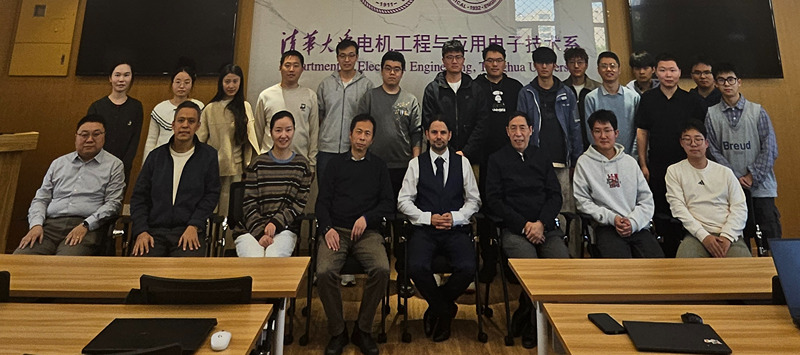
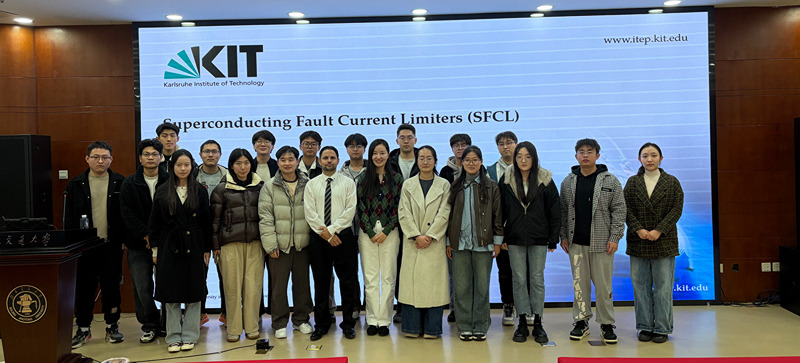
Visiting Superconductor Industry Leaders in Shanghai
As part of his research trip to China, Dr. de Sousa visited two major players in China’s superconductivity industry, Shanghai Superconductor Technology (SST) and Shanghai International Superconductor Technology Co.
At Shanghai Superconductor Technology (SST), Dr. de Sousa was hosted by Dr. Jiamin Zhu, Bai Song, and Yiyang Tong, who introduced him to the company’s state-of-the-art HTS tape production facilities. The visit offered a detailed insight into SST’s manufacturing process, stringent quality control systems, and advanced testing procedures that ensure the exceptional reliability of their superconducting tapes. In addition to exploring the company’s impressive achievements and ongoing projects, Dr. de Sousa also learned about SST’s future expansion plans to further strengthen their role in the global superconductivity market and be adequately prepared to support upcoming developments of superconducting technologies worldwide.
At Shanghai International Superconductor Technology Co., Dr. de Sousa learned about the company’s close cooperation with SST and their involvement in real-world applications of superconducting technologies. A key topic of discussion was the 1.2 km, 35 kV HTS power cable recently installed in the Shanghai power grid, a landmark demonstration of how superconductivity can enhance the efficiency and stability of urban energy systems.
These visits provided an excellent opportunity to gain deeper understanding of China’s growing superconductivity ecosystem and to identify potential avenues for collaboration between KIT–ITEP and the Shanghai research and industrial community.
"It was a privilege to host Dr. de Sousa during his visit to Shanghai," commented Dr. Jiamin Zhu, CEO of SST. "We gained significant insights from his presentation on the pioneering superconducting technologies at KIT and their expert contributions to the German Superlink project. The 15-kilometer high-temperature superconducting cable is particularly groundbreaking. Fostering this international exchange of knowledge is vital for the smooth progress of our industry, and we extend an open invitation to friends and peers across the globe to visit us at SST."
“It was inspiring to see how Chinese companies are translating superconducting research into reliable industrial products,” said Dr. de Sousa. “Their commitment to innovation and quality opens exciting opportunities for collaboration in applied superconductivity.”
